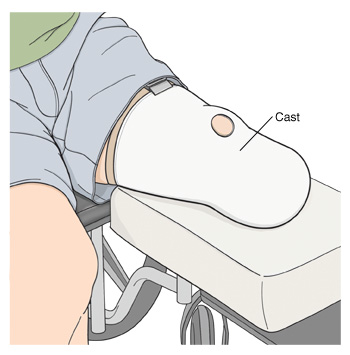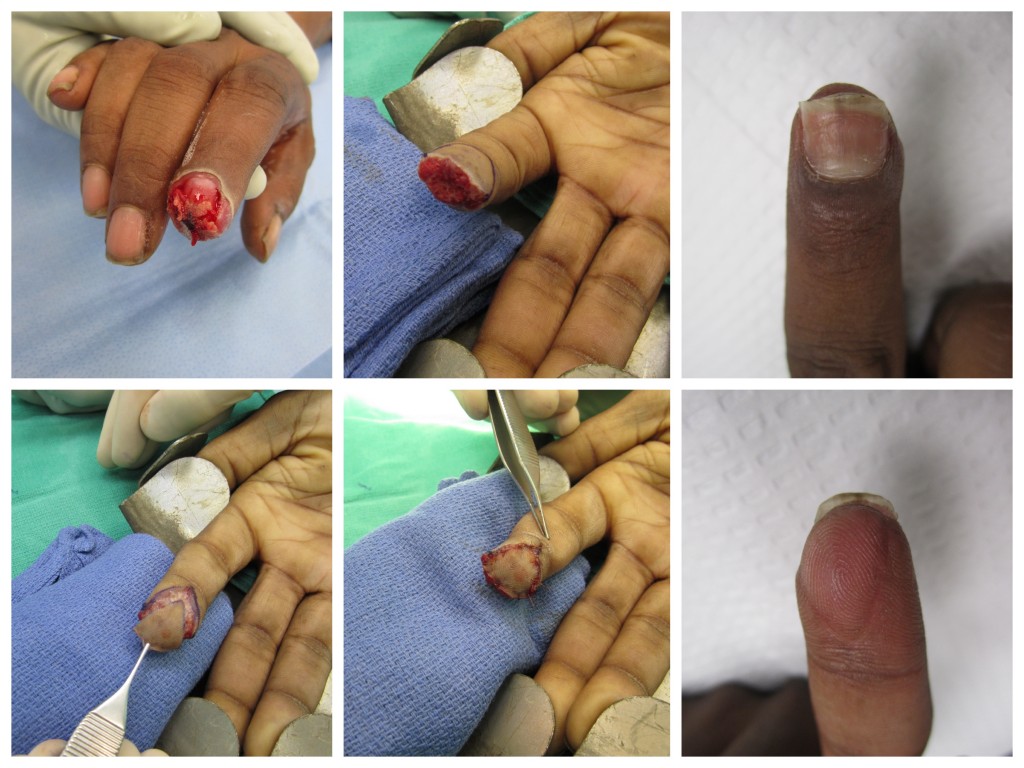In Caring for an Amputated Part It Is Important to
B Seal the part in a plastic bag and place it in a pan of water cooled by an ice pack. Recover the amputated body part if possible and transport it to the hospital with the injured person.

Taking Care Of Your Limb After Amputation Saint Luke S Health System
Its also important to keep it dry.

. D Always transport the amputated part with the patient. Elevate the injured area. Even so there are certain amputation aftercare instructions that apply across the board.
The amputated body part has the greatest chance of being re-attached by a specialist doctor if it is handled correctly as follows. D applying ice to the body part will keep the cells viable. When skin becomes water logged and gets pruney this is actually the onset of that tissue breaking down and will make reattachment more difficult.
Wrap the part in sterile gauze and keep it cool. Wrap the part in sterile gauze and keep it cool. A partial amputation occurs when some bone tissue or muscle keeps the amputated part attached to the body.
C Wrap the part in aluminum foil to preserve body temperature. Wrap the part in sterile gauze place it in a plastic bag and keep it cool avoiding freezing. Wash your hands with soap and water if possible.
B the body part should be kept at room temperature. Cooling the severed part allows reattachment to be done at a later time. Apply pressure if the injured area is bleeding.
In caring for an amputated part it is important to. You want to keep it cold not frozen. Care for a partially amputated body part.
D applying ice to the body part will keep the cells viable. When skin becomes water logged and gets pruney this is actually the onset of that tissue breaking down and will make reattachment more difficult. Place the amputated body part in a watertight plastic bag.
This is undoubtedly the most important part of the dog leg amputation process. When caring for an amputated body part. Wrap or cover the injured area with a sterile dressing or clean cloth.
You dont want to cut off the blood flow to the partially amputated part so pressure needs to be lightjust enough to slow blood loss. C the part should be tightly wrapped in a dry dressing. Wrap the part in sterile gauze and keep it cool.
If cold water is not available keep the part away from heat as much as possible. Partial amputations are more common among civilians and usually do not require surgical. B the body part should be kept at room temperature.
Gently rinse off dirt and debris with clean water if possible. Wrap the part in sterile gauze and keep it. Place the part in a plastic bag with the part wrapped in gauze moistened with lactated Ringers solution or normal saline and seal it.
In caring for an amputated part it is important to. Place the part in ice water. DO NOT allow ice or water to come into direct contact with the amputated body part.
Take care of the bodily part that has been entirely severed. Its also important to keep it dry. In addition do not let the part come in direct contact with ice or it may freeze.
In caring for an amputated part it is important to. A early notification of the hospital is important. You want to keep it cold not frozen.
Asked Dec 1 in Health Professions by AxeViro. You are caring for a 15-year-old female who has sustained a laceration to her lower arm. These include instructions regarding dressings and bandages cleaning the stump and developing proper.
When caring for an amputated body part. Wrap the amputated part in a dry sterile gauze or clean cloth. You are performing a secondary assessment on your 19-year-old trauma patient.
When caring for an amputated part which of the following principles apply. Proper care of the amputated part or parts is very important to successful replantation. In general the amputation of limbs is the result of trauma peripheral vascular disease tumors and congenital disorders.
The amputated part has no blood flowing through it which makes it much more susceptible to frost bite and tissue damage. Dont reposition the person if you. In caring for an amputated part it is important to.
C the part should be tightly wrapped in a dry dressing. You will need follow-up visits with your health care provider who will continue checking blood flow in the surgery area. If there is direct contact with ice it could result in tissue damage and render the amputated part non-viable.
This will slow the bleeding until the person receives medical care. The layer of skin that contains blood vessels nerves and. Wrap the part in sterile gauze and pack it in ice.
Have the injured person lie down if possible and elevate the injured area. The plastic bag can then be placed in a container of iced or cold water. Wrap the part in sterile gauze and pack it in ice.
Upper extremity amputations are generally due to trauma from industrial accidents. Aside from following the after care instructions provided by your veterinarian to the T you must be diligent in maintaining a positive atmosphere for your dog and monitoring their behaviour throughout. A early notification of the hospital is important.
Reattachment surgery may be possible for fingers hands. Dog leg amputation after care is where your job as a pet owner will truly begin. DO NOT put the severed part directly on ice.
Irrigate both eyes with copious amounts of water for at least 20 minutes or until you arrive at the medical facility. Always transport the part with the patient. A Rinse away debris with saline solution and place the part in a container of ice.
The amputated part should be covered in a normal saline-soaked gauze sealed in a plastic bag and submerged in icy water with no direct contact with ice. DO NOT use dry ice as this will cause frostbite and injury to the part. Save it for the medical team or take it to the hospital.
Do not immerse the amputated part directly in water or saline. Caring for the amputated body part. Following your amputation surgery your surgeon nurses and other health care professionals will teach you how to properly care for your particular amputation stump.
For the purpose of this plan of care amputation refers to the surgicaltraumatic removal of a limb. The amputated part has no blood flowing through it which makes it much more susceptible to frost bite and tissue damage. Under the right conditions there is a good chance that the surgery can restore the use of the finger or toe.
Place the unwrapped part in a dry plastic bag and seal it. Wrap or bag the amputated part in a plastic bag and keep it cool by cold packs.


Comments
Post a Comment